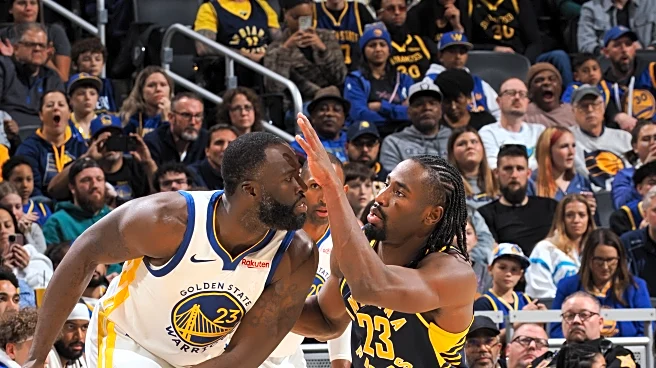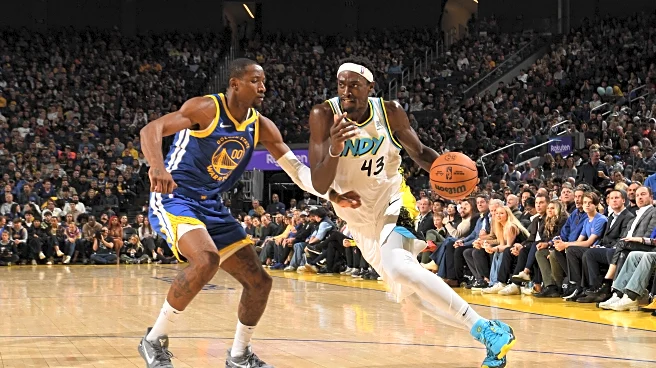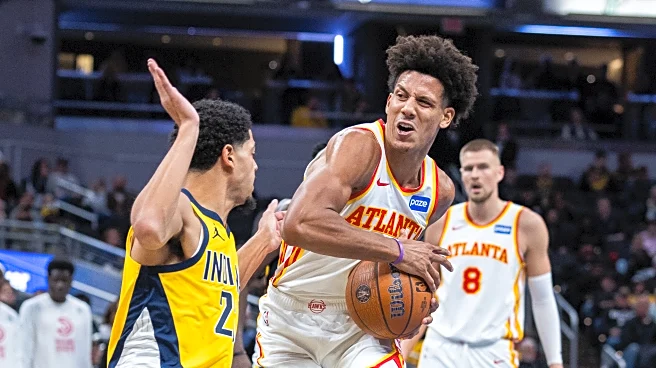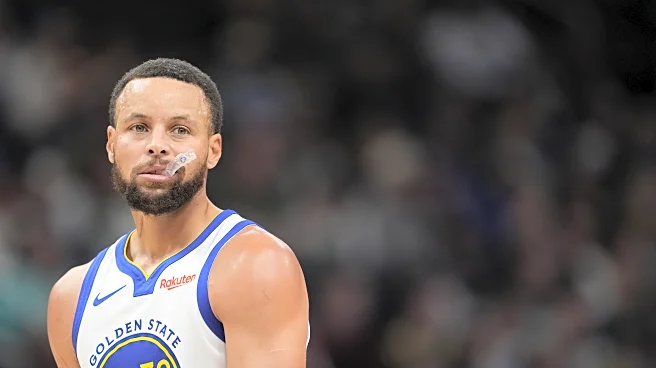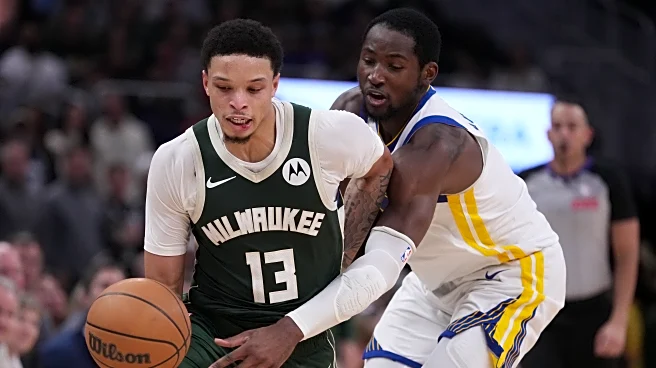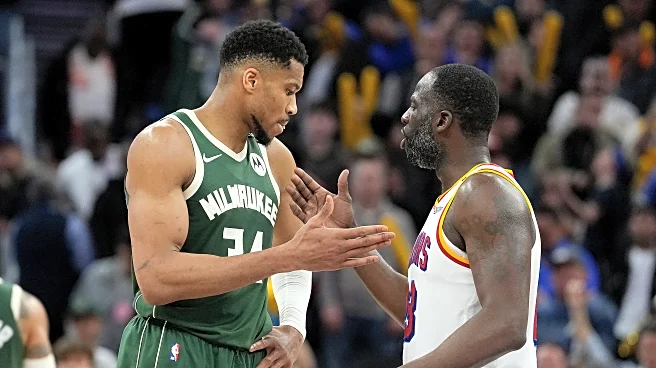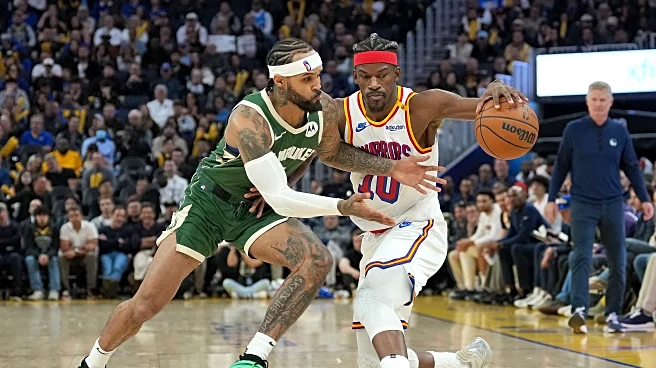Let these past two games serve as a lesson to the Golden State Warriors — one that seemingly has to be taught to them over and over again, multiple times during each season: no team in the NBA can be considered
an easy win; therefore, there is no room to coast against any team in the league. That was a lesson they had to learn the hard way again in what was a 114-109 loss to the Indiana Pacers, who were heading into the game with five key players out due to injury and had to make use of a hardship exception to sign an additional player in Jeremiah Robinson-Earl. To add insult to literal injury (at the time, at least), the Pacers were entering the second night of a back-to-back, after previously having lost their fifth game out of five games to the Atlanta Hawks.
Even without Tyrese Haliburton, Andrew Nembhard, Bennedict Mathurin, Obi Toppin, and TJ McConnell, the Pacers had enough to squeak by the Warriors, with Pascal Siakam (27-5-3), Aaron Nesmith (31-6-1), and two-way-contract player Quenton Jackson (25-6-10) severely outplaying a squad that was, for the most part, healthy and fully available. But that didn’t stop Steph Curry from having one of the worst nights of his career, with his 24 points coming on an 8-of-23 clip from the field (4-of-16 on threes), 5 turnovers, and 47.6% True Shooting. The Warriors were outscored by the Pacers by 21 points in Curry’s 29 minutes.
With the Pacers employing pesky ball pressure that often started as high as a full-court pickup, Curry uncharacteristically struggled with his handle. Jackson, who was tasked with putting pressure on Curry nearly the full length of the court, hounded Curry to decent success:
In theory, Curry should be the ultimate weapon against pressure schemes. But his shaky handle as of late has given him much more trouble against ball pressure than anticipated, while an emphasis on playing fast in order to counter the constant pressure he receives hasn’t resulted in punishment for opponents, but instead, turnovers for the Warriors.
While single-game plus-minus is by no means a be-all-end-all indicator of one’s impact and contributions toward a win or loss, it was evident that the Warriors — in what could be considered a bizarro turn of events, at least for one night — were better with their superstar off the floor. It’s safe to bet that such an occurrence, on most nights, is the exception rather than the norm, but it was nevertheless jarring to see.
Next to Curry on the plus-minus list of infamy was Jonathan Kuminga. During his 32 minutes of floor time, the Warriors were outscored by 20 points. Much of that was tied to Curry’s minutes, and not all of the blame should be placed on Kuminga’s shoulders, especially since he and Jimmy Butler were the Warriors’ main sources of rim pressure on a team that otherwise would not be able to put any sort of pressure near the basket.
However, points of improvement need to be brought to light for someone who had shown plenty of improvement so far in this young season. One of those points involved his positioning at the point of attack, which was glaring on the possession below against a Siakam straight-line drive:
The amount of goodwill Kuminga has gathered over these past few weeks is well deserved, and considering how he fills gaps and holes in the Warriors’ ecosystem that have been glaringly apparent, it’s easy to give him a pass on mistakes such as the one above. But it wouldn’t be fair to let the mistakes that are costly be ignored; arguably, it was a Kuminga mistake that ultimately cost the game for the Warriors.
After a game where Steve Kerr stated that switching was their biggest problem, Kerr was mostly satisfied with their switching against the Pacers, and opted to name rebounding, fouling, and overall execution (or lack, thereof) as the culprits behind their inexplicable loss. In the possession below, the switch between Kuminga and Curry — resulting in a Siakam matchup for Curry — was clean in its execution, although the Warriors do not want Curry to have to guard Siakam on an island.
Which is why Kuminga, after switching off, comes over to show help:

Kuminga showing help isn’t the crux of the matter in this instance — it’s what happens after Siakam sees Kuminga cutting off the nail and passes to Jackson on the wing:

Kuminga roaming around aimlessly isn’t what someone not named Draymond Green should be doing (and even so, Green picks his moments in terms of when to roam and act as a defensive “sweeper” of sorts). Then again, Kuminga may have been lacking information with regard to what was happening behind him. In other words, Curry had switched off of Siakam, hoping that perhaps Kuminga or Butler would switch toward Siakam in kind (a common tactic known as a “scram switch.”

Whoever should get the brunt of the blame, the lack of communication and connectivity during a crucial possession speaks volumes. Furthermore, it was an avoidable situation altogether, given that the Warriors had an 11-point lead at the 5:46 mark of the fourth quarter and ended up conceding a 21-5 run.
Seven games into the season — after morale-boosting wins over the Los Angeles Lakers, Denver Nuggets, and Los Angeles Clippers — the Warriors find themselves in an early rut. One can certainly blame this morass on an unforgiving schedule, in which the Warriors have already played seven games in 12 nights (including two sets of back-to-backs, with another set coming up next), which can certainly stack more unwanted weight on legs already burdened by age.
However, if they are to be included in the inner circle of Western Conference contenders, what they have shown as of late hasn’t given anyone reason to think that they are among the cream of the crop in the West, let alone in the entire NBA. A win over these Pacers and a Giannis-Antetokounmpo-less Milwaukee Bucks wouldn’t have increased their profile all that much considering the gap in talent. But it is said that truly elite teams take care of business against inferior teams. As of now, these Warriors will have to work much harder to prove they are even worthy of being tangentially elite.


